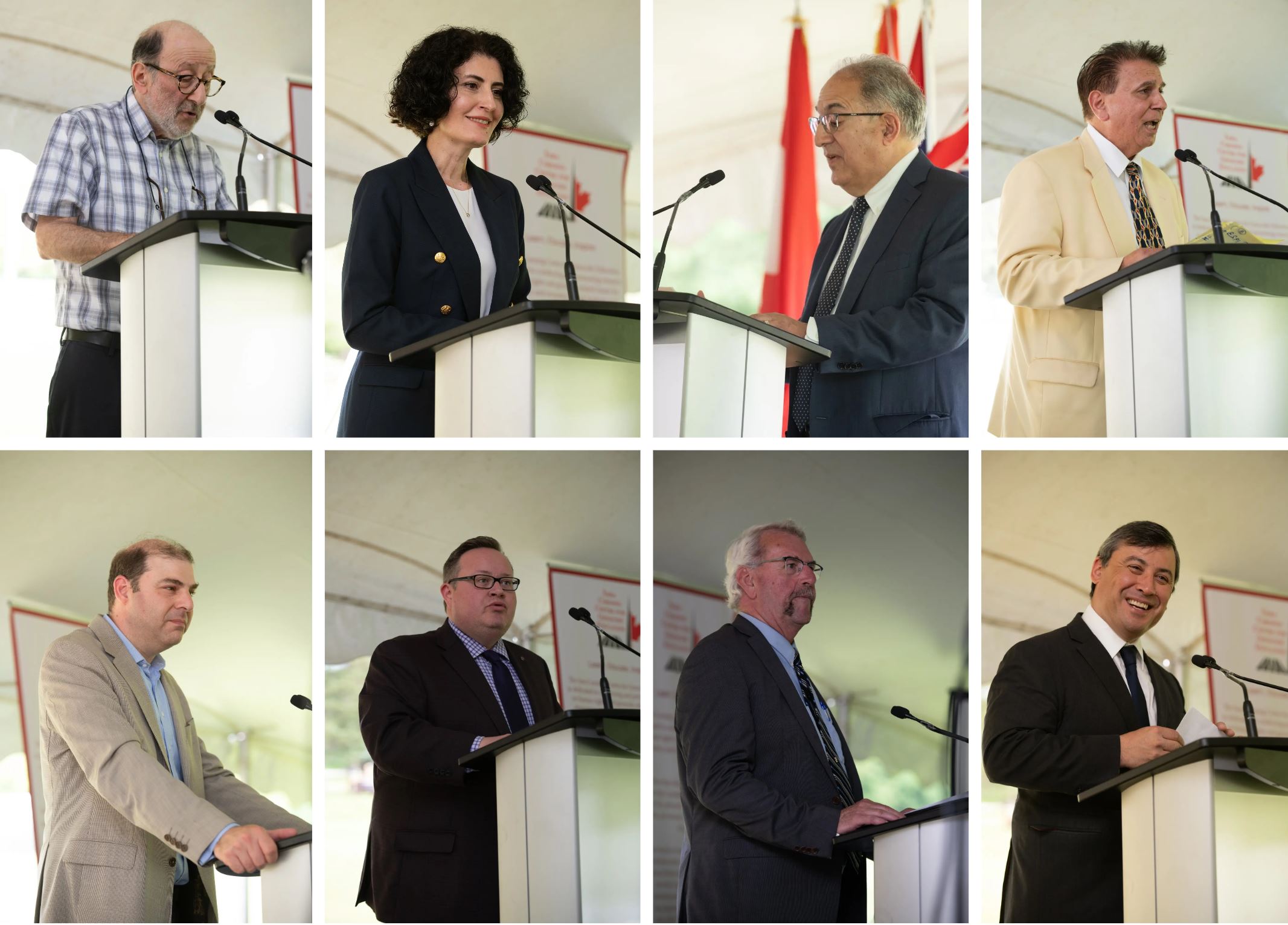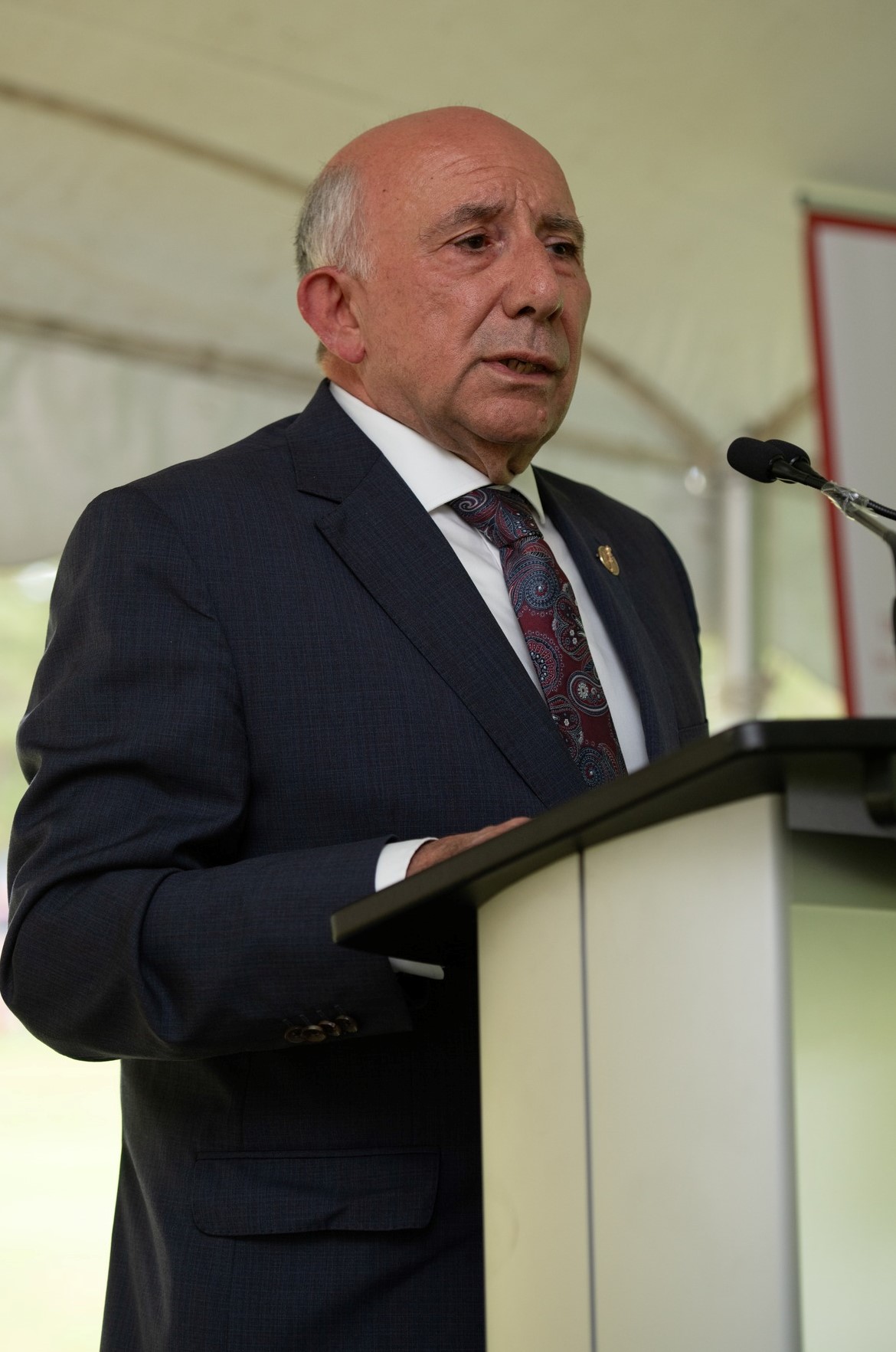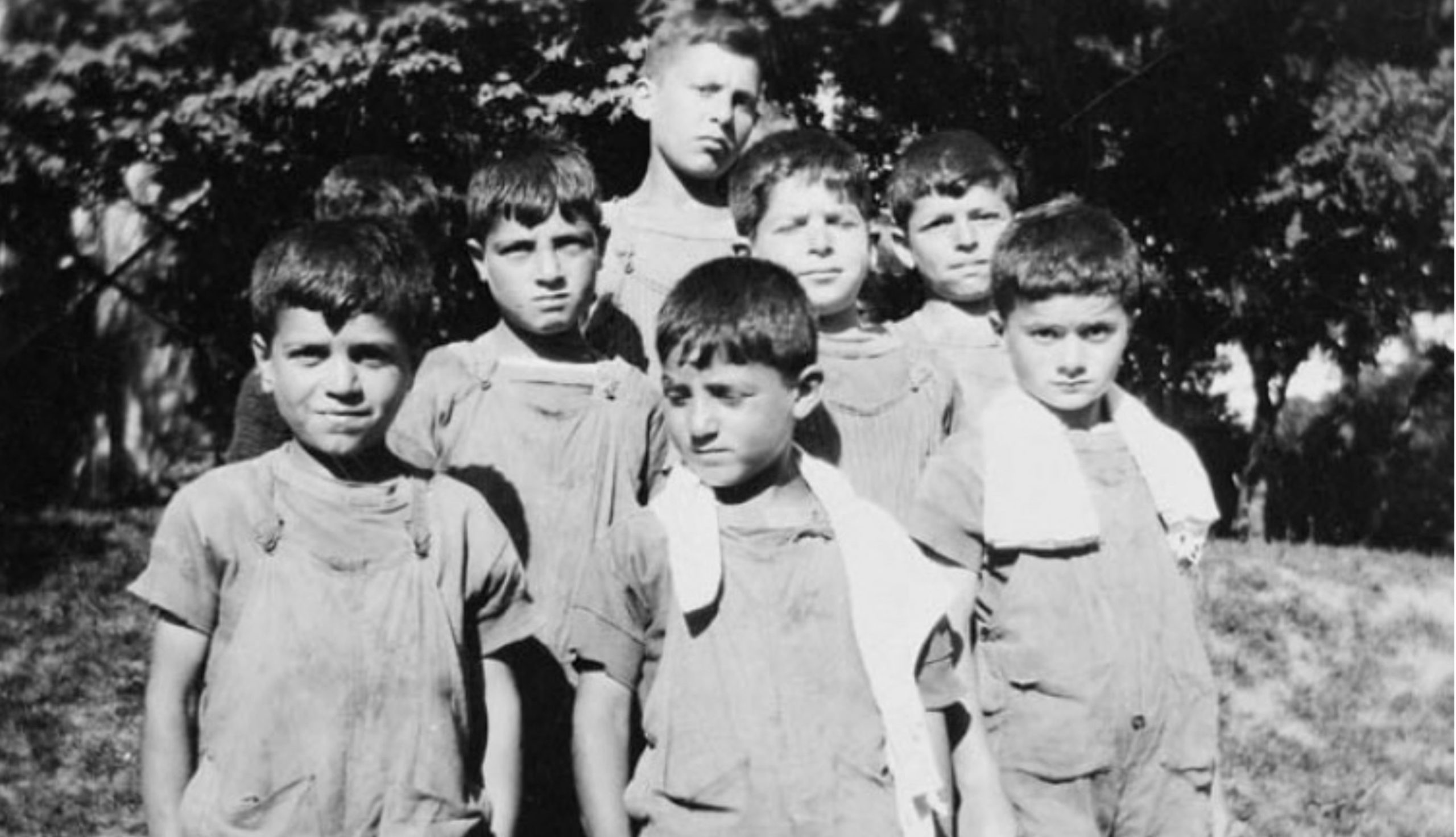Canadian Armenians commemorate the 100th anniversary of the arrival of the Georgetown Boys

Canadian-Armenians from Southern Ontario and the local Halton Hills community gathered at Cedarvale Park in Georgetown, Ontario, on Saturday, June 24th to celebrate a significant Canadian milestone – the 100th anniversary of the Georgetown Boys’ arrival to Canada.
A hundred years ago, on July 1st, 1923, Georgetown, Ontario welcomed a group of fifty newcomers – children, about twelve years old, who were survivors of the Armenian Genocide and had come to Canada from distant shores. They were later joined by others, ultimately totaling 110, and became known as the Georgetown Armenian Boys. Amongst the attendees at the event were many descendants of the Georgeown Boys.
The event was organized by the Sara Corning Centre for Genocide Education, in partnership with Heritage Halton Hills and the Halton Hills Town Council, with the support of the Armenian community and organizations in Southern Ontario. In his remarks, the Co-Chair of the Armenian National Committee of Canada thanked the organizers for bringing together the many parts of the Armenian community in Canada for the event, one that has been 13 years in the making, since Cedarvale Park was designated a historic site in 2010.
The more than 300 attendees, gathered under a tent located on the field where the Boys once lived and worked, were joined by several dignitaries across all levels of government including:
● Her Excellency Ms. Anahit Harutunyan, Ambassador of the Republic of Armenia to Canada
● Bryan May, Member of Parliament for Cambridge, and Parliamentary Secretary to the Minister of National Defence and Co-Chair of the Canada-Armenia Parliamentary Friendship group who brought greetings from the Right Honourable Prime Minister Justin Trudeau and the Government of Canada.
● Michael Chong, Member of Parliament for Wellington-Halton Hills – Conservative Party of Canada Shadow Minister of Foreign Affairs who brought greetings on behalf of the Leader of his Majesty’s Loyal Opposition Leader and the Federal Conservative Caucus
● Aris Babikian, Member of Provincial Parliament for Scarborough-Agincourt, who brought greetings on behalf of the Doug Ford, Premier of Ontario and the Government of Ontario
● Acting Mayor of Halton Hills, Bob Inglis, Municipal Councillor for Ward 4 who brought greetings on behalf of Her Worship Mayor of the Town of Halton Hills, Mayor Ann Lawlor and Halton Hills Councillors
The dignitaries recognized the importance of the Georgetown Boys as Canada’s Noble Experiment – a historic humanitarian act that took place as a response to the Armenian Genocide.
Over a hundred years ago, starting in 1915, the government of the Ottoman Empire decided to eliminate its Armenian population through genocide. At that time, one-and-a-half million people were killed, and half a million were left homeless, as refugees. Among those refugees were tens of thousands of orphaned children.
Here in Canada, news of the genocide was commonplace. Armenians wrote to each other, looking for relatives, hoping to rebuild their families. Non-Armenians opened the Globe, the Toronto Star, and other newspapers and read about the suffering of a far-away people. Thousands of those readers did not remain unmoved by the words on the page and they donated generously. Through fundraising campaign after fundraising campaign, $17 million in today’s money was collected.

Among those readers was a group that wanted to do even more. Though the First World War had ended, the genocide continued, and many orphans needed help. A project was set in motion to bring some of them to Canada. With the eventual approval of Prime Minister Mackenzie King and the Department of Immigration, a small quota was granted to this group to try something new: to bring in child refugees, thereby saving their lives, while also boosting Canadian agriculture. These child survivors—the Georgetown Boys— were brought to Canada under the care and supervision of the Armenian Relief Association of Canada and the United Church of Canada and were raised in the Georgetown Armenian Boys’ Farm Home located in what is now known as Cedarvale Park over the course of the 1920s. By the 1930s, the Boys had moved on to farms across southern Ontario, facing challenges, overcoming hardship, and contributing to the cultural richness of their adoptive homeland.
The attendees also had the opportunity to hear the reflections of three descendants of the Georgetown Boys who were present at the event, including:
● Mr. Tom Toros Jackson, son of Missak Toumajian. After leaving Georgetown, Mr. Jackson’s father worked on farms in southern Ontario, served in the Canadian military, then settled in Hamilton. Tom Jackson is now the longtime Councillor of Ward 6 in his native city.
● Mr. Bob Adourian, the son of Pavlos Paul Adourian and the nephew of Onnig John Adourian. Several of the Georgetown Boys and Girls were siblings, just like Pavlos and Onnik. Bob Adourian is a Lawyer at Devry Smith Frank LLP.
● Dr. Lorne Shirinian who is a descendant of two Georgetown Boys and a Georgetown Girl: Mampre Shirinian, Mariam Mazmanian-Shirinian, and Ardashes Mazmanian. Dr. Shirinian is a poet, writer, and filmmaker. He is professor emeritus at the Royal Military College of Canada, in Kingston.
The story of the Georgetown Boys has many legacies. Gabriella Batikian, the master of ceremonies and the educational program coordinator at the Sara Corning Centre for Genocide Education explained, “The field we’re sitting in today is one in which the Boys walked, played, and worked. They planted, harvested, and raised livestock here. The Boys left their mark on this place, just as the Mississaugas of the Credit First Nation had before them, just as others have since. For many of you here today, Georgetown is part of your family history. For others, it’s part of your communal history. For historians, the evolution of Canadian immigration policy passes through here, as does the history of philanthropy in our country.”
The 100th anniversary event was made possible by a number of organizations and was coordinated by the Sara Corning Centre for Genocide Education. Established in 2012, the Corning Centre is dedicated to disseminating human rights- and genocide-related research to students. Since its founding, the Corning Centre has been researching and promoting the Georgetown story and has other Georgetown Boys related initiatives forthcoming. This fall, the Corning Centre will be publishing the Georgetown Boys’ newsletters, which were called Ararat. 45 issues in all, covering more than 700 pages, filled with drawings, stories, and opinion pieces by the Boys and others. In 2026, the Centre is looking to mark the centennial of the arrival of the first Georgetown Girls. The Girls’ experiences were very different from those of the Boys, and they reveal an entirely different side of Canadian history.




Comments are closed.